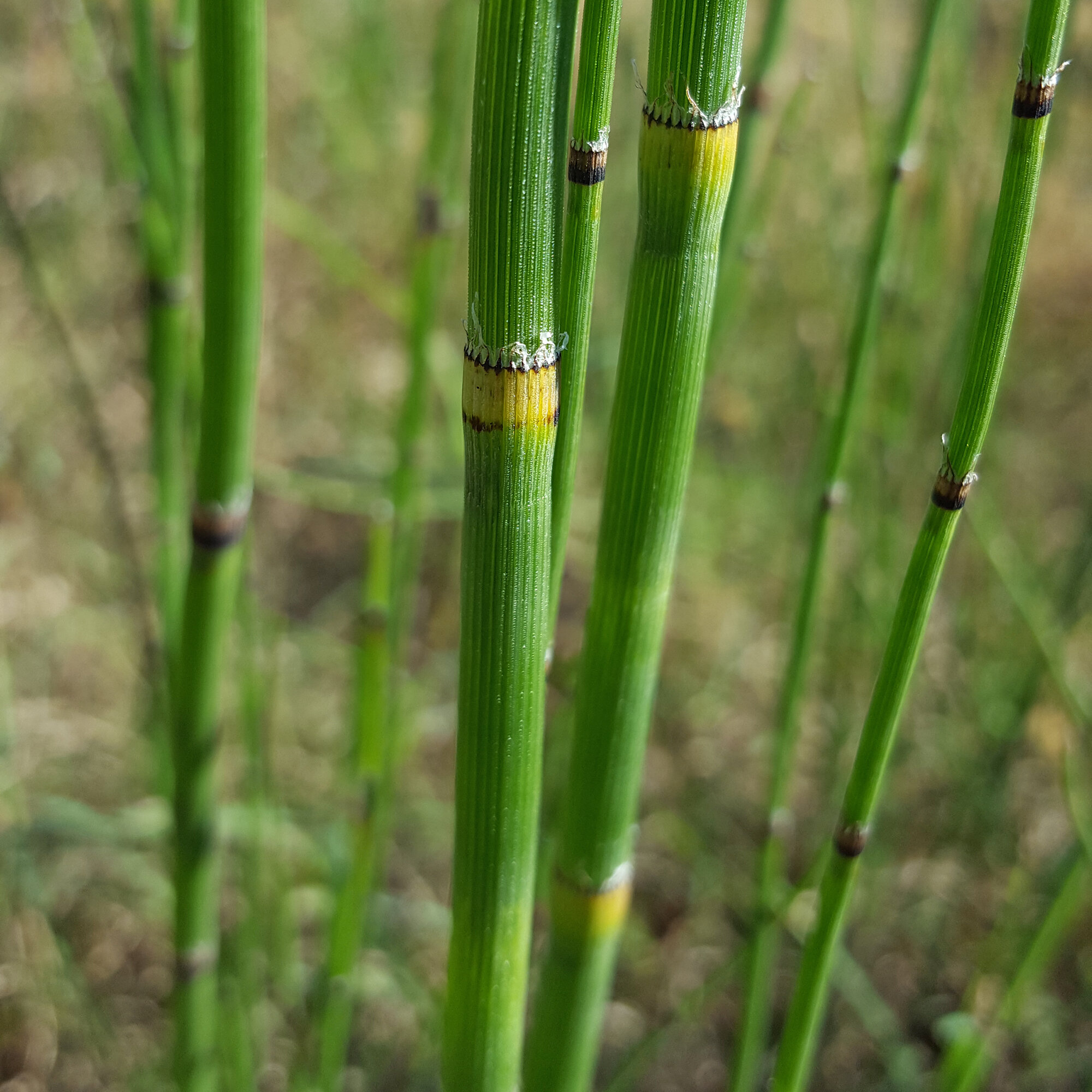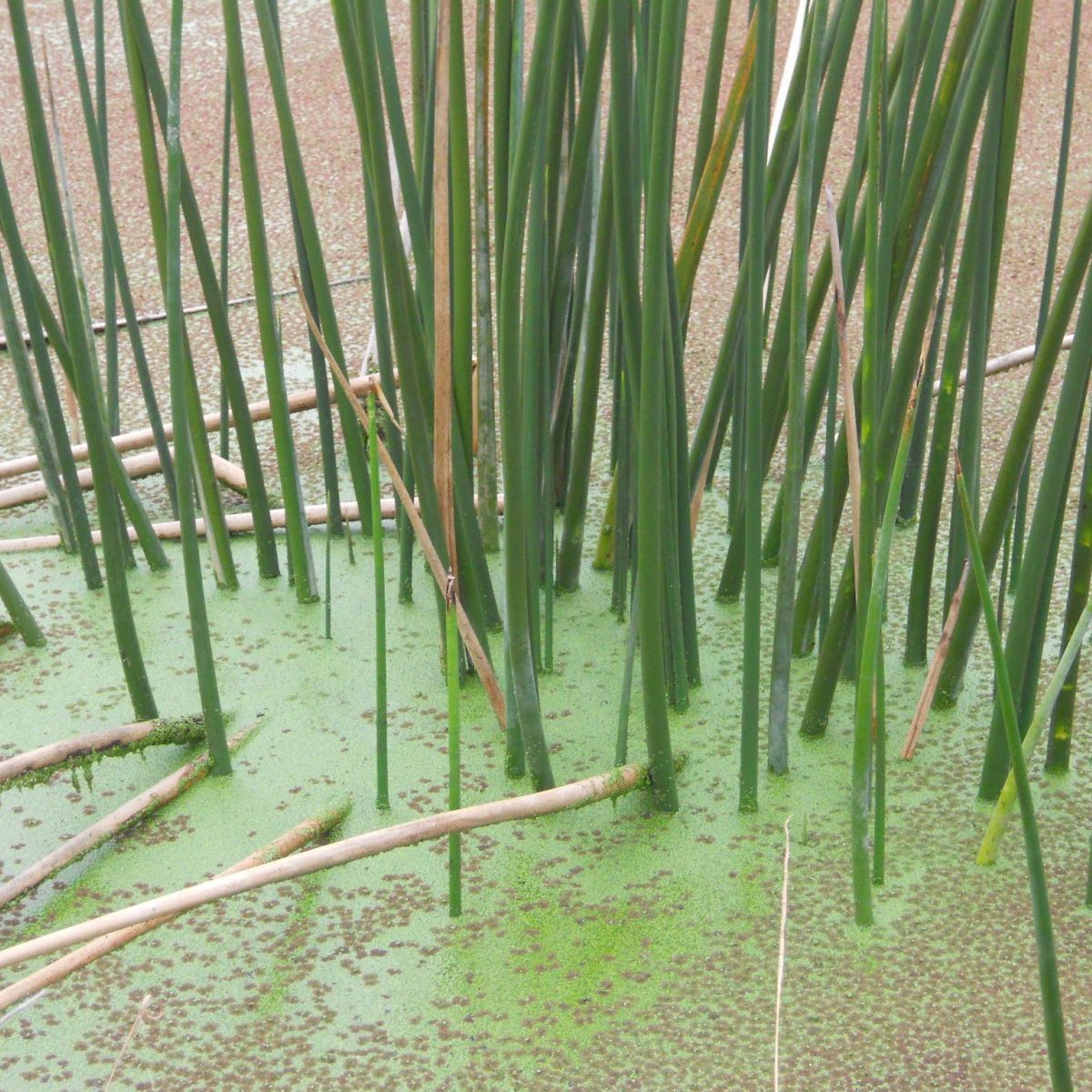Rushes & Other Green Stems
Jointed flatsedge
(Cyperus articulatus)
Jointed flatsedge appears to be one stem, with no branches and no leaves, which gives it a rush-like appearance. It says “pond here”, like cattail, bulrush, or horsetail do, but without the dominating growth habits of those species. In summer, a blonde puff of seedheads appears at the top. Jointed flatsedge prefers full sun, moist soil or occasionally a few inches of standing water.
CYAR, OBL
Squarestem spikerush
(Eleocharis quadrangulata)
Here’s another rapid colonizer which is great for establishing wetlands in several inches of standing water. The stems really do have four concave sides. Plant broadly and densely to create a beautiful water-filtering marsh.
ELQU, OBL
Horsetail rush
(Equisetum hymenale)
Also known as Scouring rush, the stems contain rough silica and were used to clean pots. Horsetail features evergreen, leafless stems--the same basic design for 300 million years. This plant will gradually colonize so containing them is often suggested.
EQHY, FACW
Common rush
(Juncus effusus)
This clumping 3-4’ tall rush stays nearly evergreen, making it an important foundation for aquatic gardens where many other species go dormant in winter. Another benefit is that nutria tend to pass it up looking for more tasty species.
JUEF, OBL
California Bullrush
(Schoenoplectus californicus)
This perennial fresh-to-brackish marsh plant is in the sedge family. Native across the southern United States, it grows in dark green stands 5’ to 10’ feet tall. It establishes best in shallow waters but is one of very few emergent species that can tolerate water up to 24” deep. California bulrush is a master of erosion control.
SCCA, OBL
About the Plant Codes
The US Department of Agriculture codes plant species with a “symbol” that begins with the first two letters of the botanical name. Thus the symbol for Delta arrowhead, Sagittaria platyphylla, is SAPL. Wetland Indicator Status is the chance of a species being found in a wetland and non-wetland setting. The main use is to determine if a community of plants constitutes a wetland, and what the extents of the wetland may be (i.e., wetland delineation). Green Star specializes in OBL, FACW, and FAC species.





